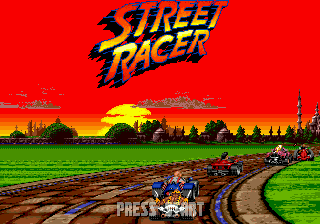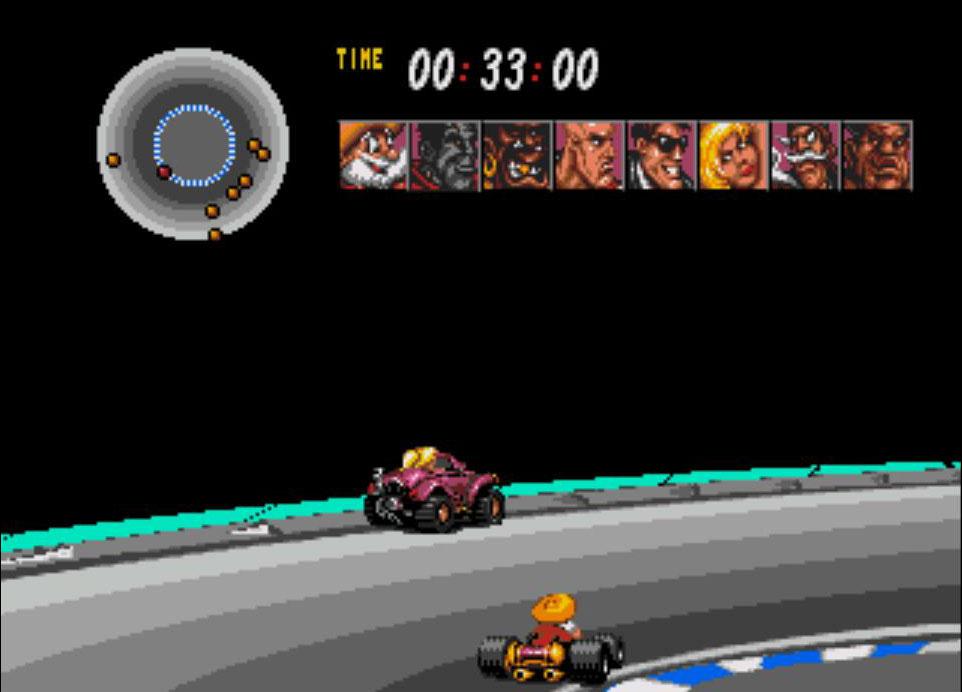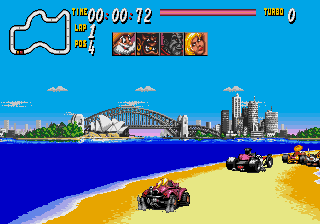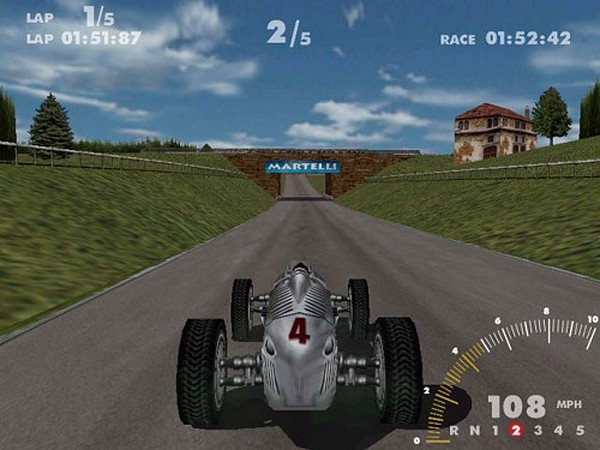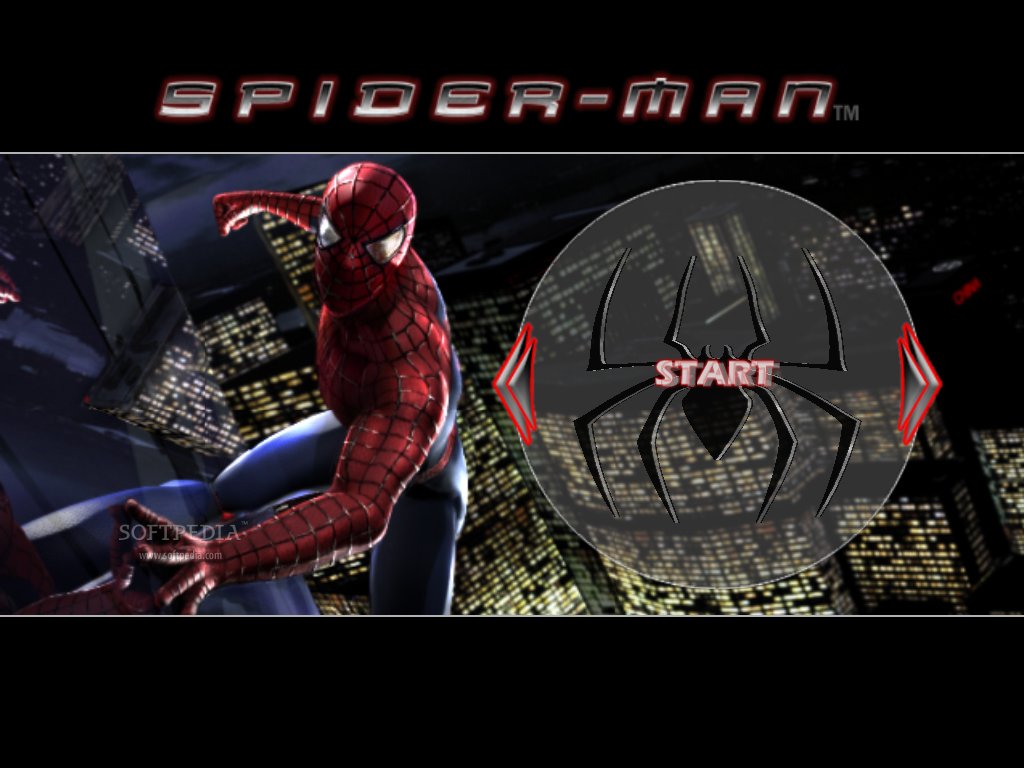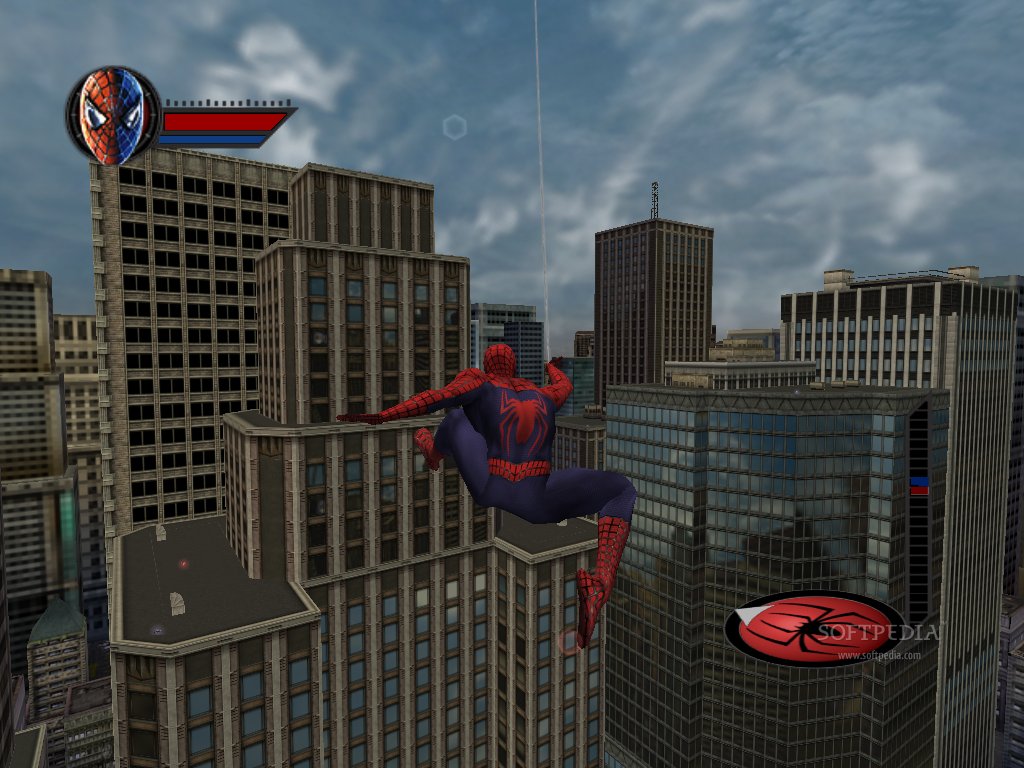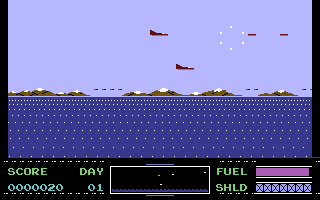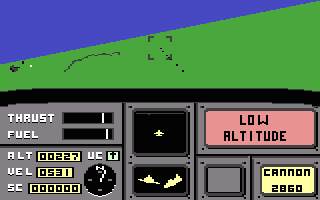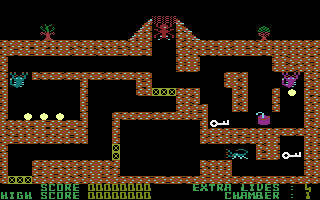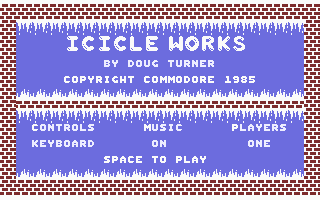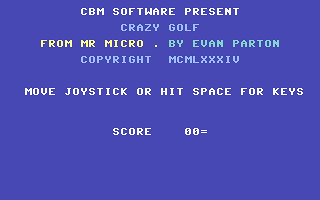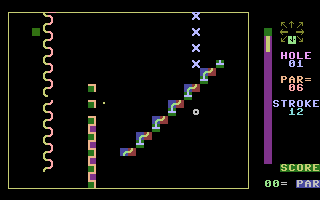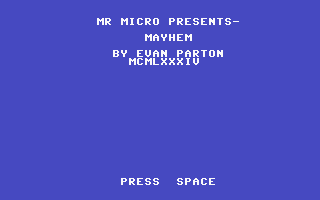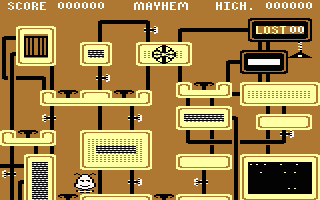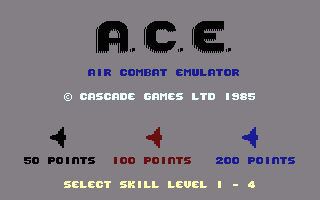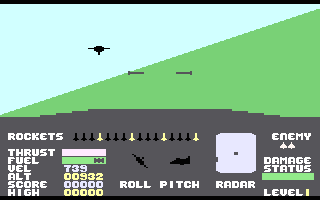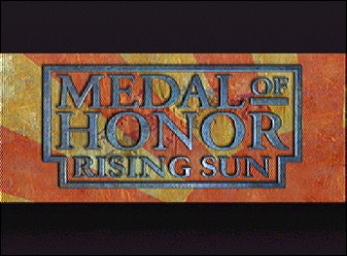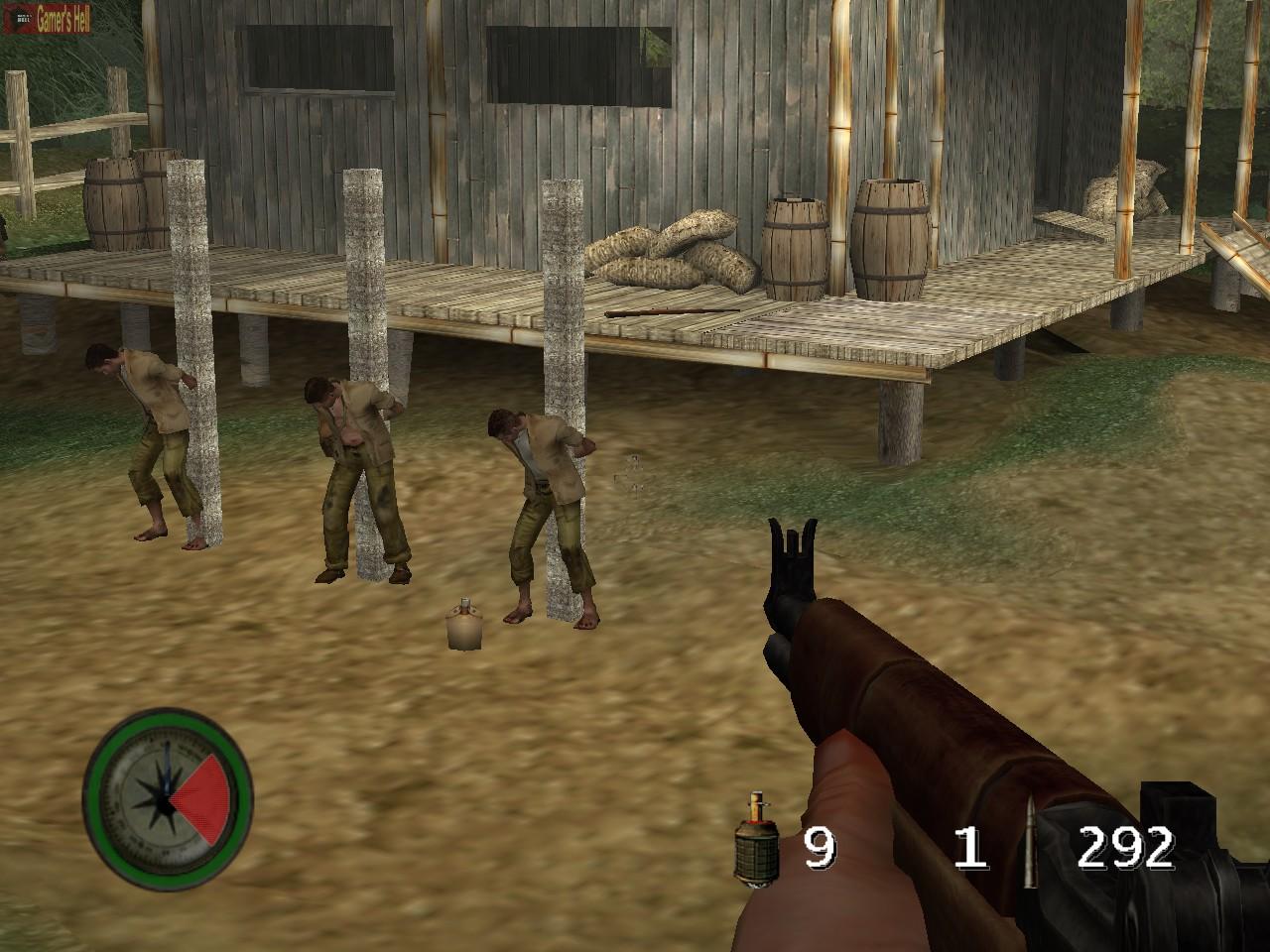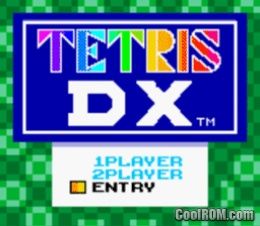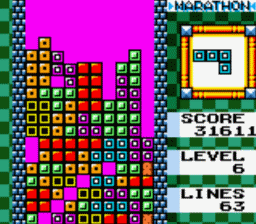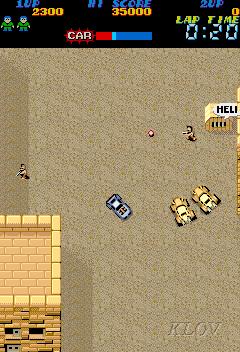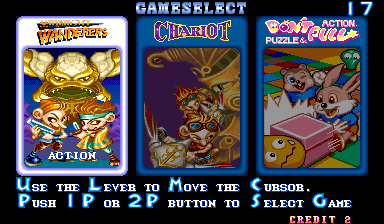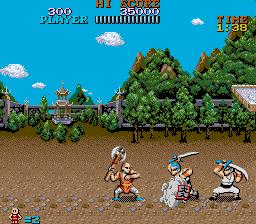Game: Street Fighter
Console: Arcade
Developer: Capcom
Release Date: 1987
With limited home versions on the Turbografx, Commodore and Atari ST, the best known version of the first game in the Street Fighter series was the arcade one. The series didn't get much attention until the second installment, however and in a way you can see why when playing this. For a start, only Ryu is playable in One Player mode with Ken joining him in multiplayer, the fighting seems very basic and jerky and although the graphics are good for the time, the backgrounds don't move particularly smoothly either.
In the game, you fight two opponents per country in a total of five countries. Only a few of these opponents ever appear again in the Street Fighter series, and they all have the same voice clips after the fight upon winning or losing. The reason Street Fighter II was so successful was because it stood out from other fighting games as a class above. Unfortunately this game doesn't do that as well as its sequel.
In terms of difficulty, enemies seem to do more damage with their attacks than you are able to do with yours. This is somewhat irritating in "normal" mode, and perhaps something you'd expect to find on harder difficulties. It just doesn't feel like a fair fight when an opponent can beat you in 4 moves, yet you need to hit them 10 times to win. Overall it's a messy fighting experience at best and its only real value is for those wanting to see the origins of the series.
Rating: 32/100 Status: Gave Up
Grade: E Continues: N/A
Game: Strider
Console: Arcade
Developer: Capcom
Release Date: 1990
If you've read my Strider II review for Master System, you'll know that Strider was a game series that featured a protagonist with a sword and climbing hooks who could scale walls and flip to higher heights than conventional adventurers. The original arcade game features the main character making his way through 5 different levels to save the Earth. With just a sword attack to defend himself, the player must play their routes carefully through the levels.
The gameplay is generally enjoyable, with elements of platforming and exploration coming together with the storyline to see the player fighting off robotic and human enemies. It's also possible to aquire robots which fight on your side, against the enemy. Sometimes it's not overly clear where you're supposed to go, and there are some hard moments here and there, but generally the difficulty is better than most in this collection.
The graphics are very impressive, much better than those of the scaled down Master System version of Strider II. All of the enemies and levels have interesting designs and this compliments the level design of the game also. Musically there's an action style soundtrack which fits well with the game. There are a lot of good ideas in the game, mixed in with some more questionable features. Overall it's worth checking out for sure.
Rating: 62/100 Status: On Final Level
Grade: C Continues: 25
Game: Super Street Fighter II
Console: Arcade
Developer: Capcom
Release Date: 1993
One of the most disappointing inclusions on the collection, Super Street Fighter II features great graphics, smooth gameplay and all 16 of the characters from the arcade version. The problem is that even on the easiest difficulty, it's hard to win a round, let alone an entire fight. I'm aware that arcade versions of fighting games are usually harder so as to make more money off paying customers but there's literally no fun in constantly getting beaten up.
With the home console versions of this game I was able to make it to the end, so I don't think it's a problem with my skill level. At least in those versions there was gameplay beyond hoping to win both rounds of the opening fight. Unfortunately this rather taints the experience and while others may argue that it's an arcade perfect port of the game, I'd have given up on trying to win a fight if this was in an arcade, personally.
As I mentioned graphically the game is stunning and much better than the home console versions, the music too is spot on and if it weren't for the difficulty, the fighting would also be smoother and more enjoyable than any home version. Unfortunately there's no escaping this negative side to the game, and so its score must reflect that.
Rating: 30/100 Status: 2nd Fight
Grade: E Continues: 10
Game: The Speed Rumbler
Console: Arcade
Developer: Capcom
Release Date: 1986
The Speed Rumbler is a shooting/driving game set in a futuristic society where vigilantes with cars and guns rule the streets, and you're tasked with making your way through these violent towns and rescuing innocents from captivity. There are 7 locations that you're expected to clear of enemies, and you're given just over 20 minutes to do so. Every time you die, 5 seconds is added onto your time and yo're not allowed to take over 4 minutes in any one area. Personally I think having both of these time limits is somewhat silly because if you adhere to the 4 minute rule, you'll adhere to the overall limit. The only situation it prevents is getting near to the end and then running out of time, which is suppose could be annoying.
The main issue with the game is that the control is confusing, if not downright terrible. Sometimes pressing left will steer the car left, other times its forward and I can't seem to work out any pattern to this. Enemy cars are increasingly persistant in crashing into you and damaging your car so that it blows up and you're forced to start from a checkpoint. Added to this, most things take a couple of shots from you to destroy meaning that you either attempt to speed through levels taking damage, or go slowly and run out of time. Overall the concept is good, but the execution leaves so much to be desired that the game is hardly fun to play at all.
Rating: 11/100 Status: Level 5
Grade: F Continues: 21
Game: Three Wonders
Console: Arcade
Developer: Capcom
Release Date: 1991
With three games in one, Three Wonders is like a collection, within a collection. There's Midnight Wanderers: Quest for the Chariot which is a platforming shooter, Chariot: Adventure to the Sky which is a space shoot 'em up sequel to the first game and Don't Pull which seems to be an entirely unrelated puzzle game. While it's odd to have two directly related games next to a completely different one, they're all of good quality and make for one of the gems of this collection.
Midnight Wanderers features a quest through 5 areas where the protagonist, Lou fights various enemies based on various astrological features, to get the chariot for defeating Gaia. Stylistically the game looks a lot like Rayman for PS1 in its earlier stages, which shows how good the graphics are for 1991. While still more difficult than conventional platformers, the game is easier than a lot of others featured on the collection and features a much more conventional difficulty curve throughout the game.

Chariot: Adventure Through The Sky is the best shoot 'em up on the compilation, featuring a range of powerups, bosses based on signs of the Zodiac and a much more sane level of difficulty than the other games. It features the same characters as and some themes from Midnight Wanderers, as it's a direct sequel. The only real downside of the game is that you're forced to fight each boss one after another before the final boss, but this is a feature in other games I've reviewed also (House of the Dead, Streets of Rage). Overall though it's a very enjoyable shoot 'em up with an interesting astronomical theme.

Don't Pull is a fairly fun puzzle game where you play as a rabbit, crushing enemies with blocks that you push into them. There are 20 levels in total, and it gets a little repetitive but on the whole the gameplay works well and it features some good ideas. What's strange about this game is it's inclusion on Three Wonders, since the other two games feature the same characters, and ideas in different styles of gameplay where this is strikingly different.
Overall Three Wonders has some great gameplay and graphics featured in its three titles, and a good variety of ideas, enemies and things to do. The first two games have more lasting appeal than Don't Pull, but that's not to say it isn't a good inclusion so much as a weird one. Musically, all three of the games feature an impressive amount of good tunes and sound effects. I'd reccomend playing all three games, since they're some of the best on the collection.
Rating: 72/100 Status: Completed
Grade: C Continues: 57 (all 3)
Game: Tiger Road
Console: Arcade
Developer: Capcom
Release Date: 1987
Tiger Road is a run-of-the-mill challenging sidescrolling Fighter/Platformer. There's lots of enemies and obstacles on screen at any one time and gameplay usually goes something like this: If you move you get hit by something, and if you don't move you get hit by something. The main way of progressing through levels is usually to wave your sword about whilst pressing right and hope that your character has enough energy to get to the end of that room, so that when the game restarts you at a checkpoint, you're at the next one. Otherwise there's not much hope of getting anywhere.
There are some levels which have slightly better ideas than just moving left to right, but unfortunately the number of enemies and awkward controls make it difficult to enjoy these. Being swarmed with enemies whilst trying to make a difficult jump doesn't seem like the most fun you could be having. There's 4 stages in the game, but I got stuck in each one of them, and restarted in the next.
Graphically, the game's not all that with graphics slightly better than that of 3rd generation consoles. The in-game music is alright, but the sound effects and voices leave a lot to be desired. Overall it's pretty average for the collection, it's playable until you get stuck somewhere and the difficulty means that's pretty often. There's not really much reason for anyone to play this thesedays, as something like Revenge of Shinobi far outclasses it in the same genre.
Rating: 15/100 Status: Played
Grade: F Continues: 15
Game: Varth: Operation Thunderstorm
Console: Arcade
Developer: Capcom
Release Date: 1992
Another game in the vein of the 1942 series, Varth stands out by featuring a defense system which includes pods circling the player that deflect enemy fire, thus making the game somewhat easier. The levels are also shorter, but there are more in the game overall (a total of 30). The game seems to focus more on skill and dodging attacks whilst shooting enemies rather than the blind all-out action of some of the other games in this style on the collection. This means that there's a better difficulty curve throughout the game also.
Graphically the game is impressive to a degree, although having been released in 1992 it's not far off the systems of that time. Gameplay is generally fun and I only had to continue around once per level in playing. There's a small array of powerups and special moves that the player is able to use to their advantage, but after a little while repeating enemies, and gameplay style leads to the game being somewhat repetitive. Overall though, it's a slower paced shoot 'em up which lends itself better to western audiences and those looking for an enjoyable game on the collection.
Rating: 60/100 Status: Level 10
Grade: D Continues: 10
So with that, I've played all 20 of the games on the Capcom Classics Collection Vol. 2. With an average rating of 50.6 out of 100, it's fair to say that they're a mixed bunch ranging from failed ideas for new types of arcade games to quality beat 'em ups. In total I used 432 continues, which is approximately 1296 lives or the equivalent of 144 cats. There's no doubt that Capcom's arcade games were pretty difficult on the whole, and this collection won't really appeal to anyone who dislikes losing.
Overall as a compilation, the games you'd think would be impressive (SSFII, Street Fighter etc.) are somewhat of a disappointment, and games never released in Europe or outside of arcades seem to be hidden gems (Captain Commando, The King Of Dragons). It's got some decent titles, worth owning since they're not available anywhere else, but anyone expecting a large amount of variety in the 20 games will find a large amount of Beat 'Em Ups, Shoot 'Em Ups and fantasy themed platformers.
The collection also features bonus tips, music and art for all of the games featured which is unlockable through completing certain in-game objectives. As well as being an incentive to try every game it gives the opportunity for the player to learn more about it. Other bonus features include a tutorial on Super Street Fighter II, a Capcom quiz in the style of Quiz and Dragons and the credits for the game.
Although I don't include collections such as this in my overall game rankings due to the fact that they're hard to rate against other single games, I will give this a score which will appear on the video game collection ranking table.
Rating: 75/100


_(v1.0)-3.jpg)





